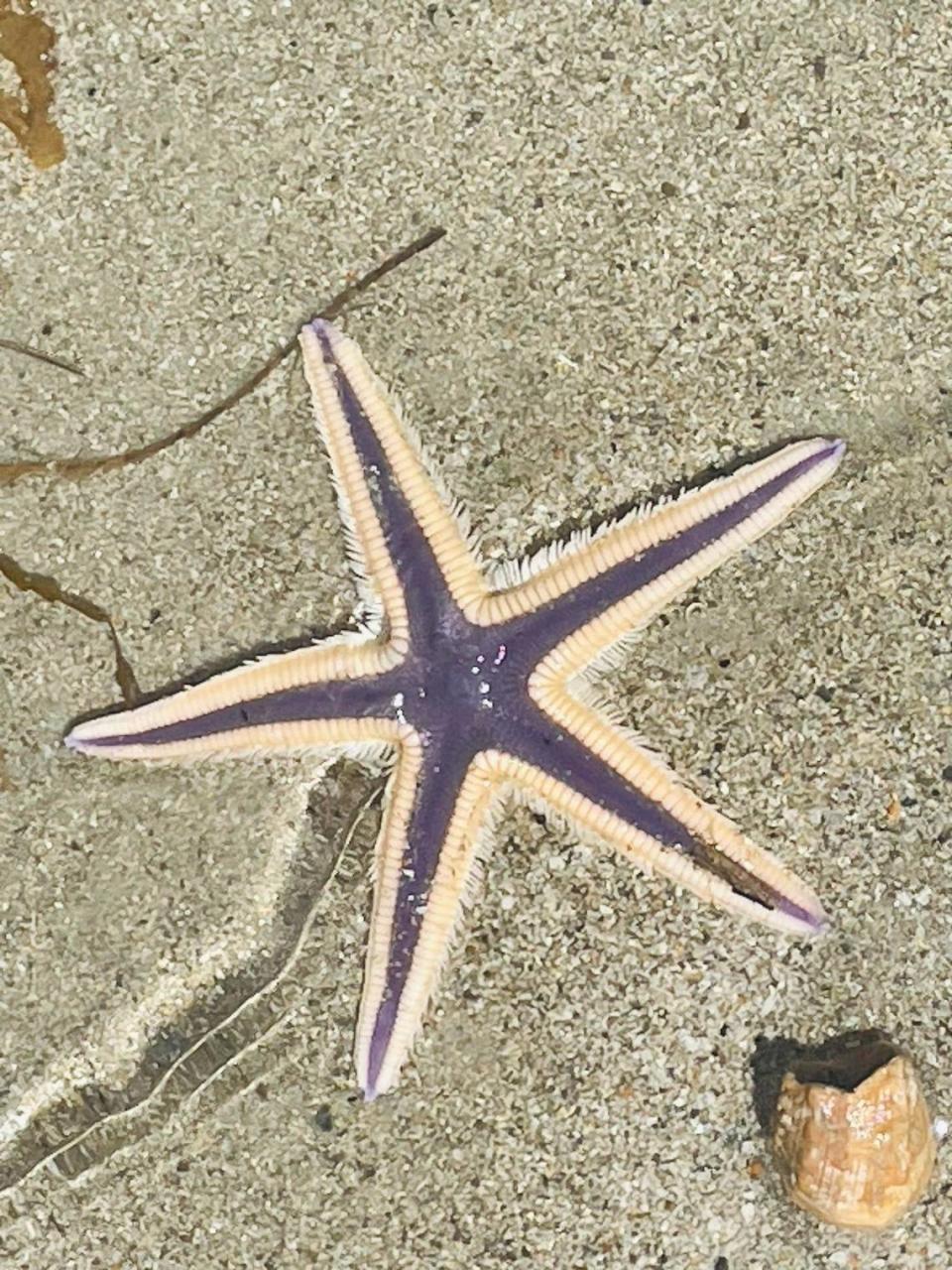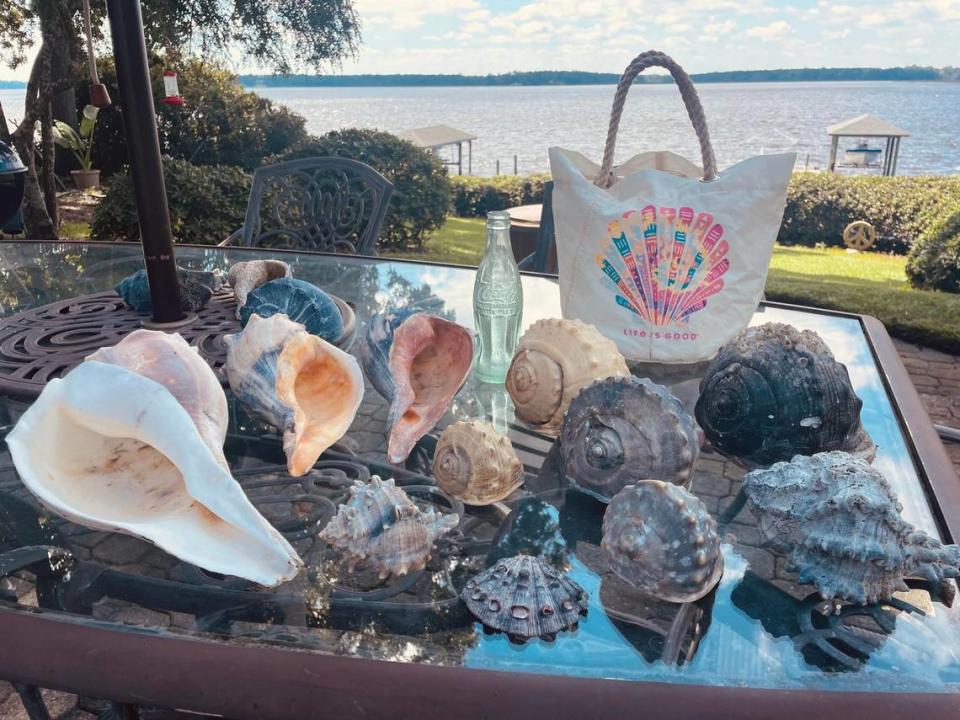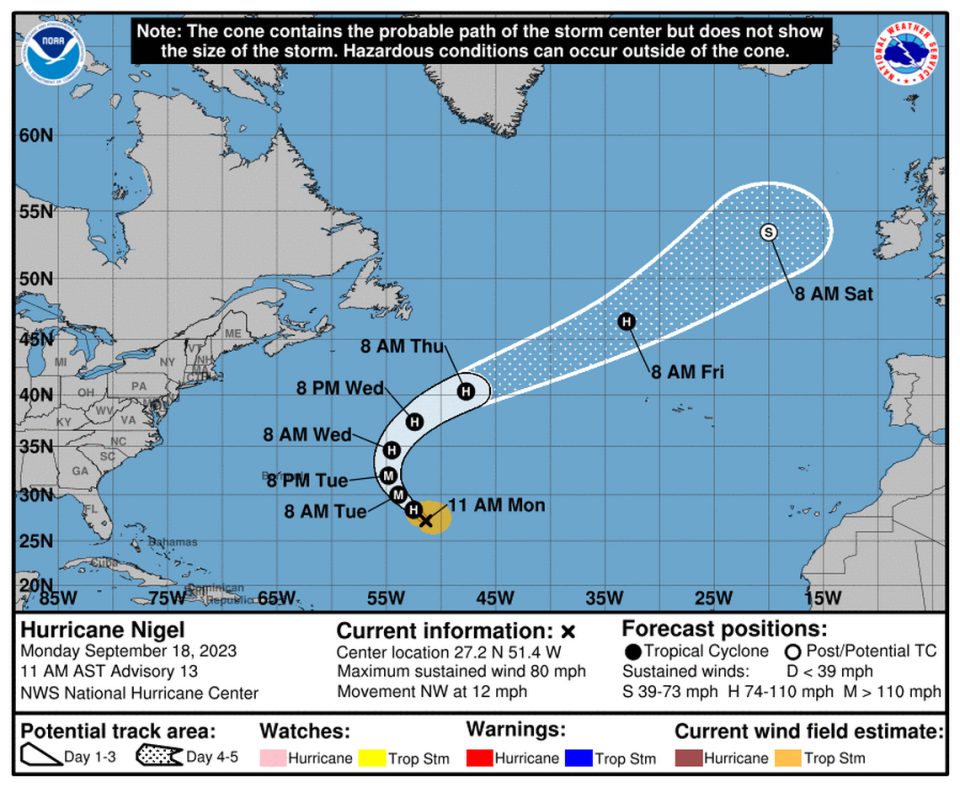Shell hunters find treasures that Hurricane Lee left on NC beaches. Where to look.
Tractor-trailer-sized waves churned up by Hurricane Lee last week turned several North Carolina beaches into fertile grounds for shell-seekers.
What have shell hunters found?
The ocean spit out huge numbers of shells, including a wide variety of types of whelks, plus smaller shells such as olives and even hard-to-find Scotch bonnets, the official shell of North Carolina.
But as big hurricanes sometimes do, Hurricane Lee also deposited specimens not typically found within hundreds of miles of the N.C. coast.
In some places, collectors said, it was hard to walk on the sand or wade in the surf without hitting a whelk or a piece of driftwood a day or two after the storm had passed.
“Ohhhh,” Laura Castro said, groaning with envy Monday over a Facebook photo she saw over the weekend showing the bed of a pickup truck full of whelks gathered on the Outer Banks, which saw the biggest waves from the storm.
But Castro, who lives on Emerald Isle, managed to expand her own collection, finding an intact lion’s paw scallop shell at Bear Island, part of Hammocks Beach State Park. Those are rarely found on North Carolina beaches because they live in deep dark water, often more than 100 feet down.

What’s the best NC beach for shell hunting?
While thousands of shells have been harvested by collectors, many of whom posted photos of their hauls on social media, several beaches still may yield better-than-average buckets full for the next several days.
No two hurricanes are exactly alike, and beach-excursion guide Ray Stallings of Hatteras Island says the same storm can cover one section of beach in shells while leaving miles of adjacent shoreline wiped completely clean.
▪ Holden Beach, a Brunswick County island where a re-nourishment project delivered tons of fossilized sea biscuits in the spring, was covered again with those, whelks and olive shells following Hurricane Lee.

▪ Cape Point, part of the Cape Hatteras National Seashore, which juts into the Atlantic like an Outer Banks elbow, received maybe the greatest bounty from Hurricane Lee. The beach, accessible by permitted 4-wheel-drive vehicles or by a lengthy walk from Ramps 43 and 44 off N.C. 12, had a profusion of whelks of different sizes and types.
Collectors also have found fossilized whale vertebrae and driftwood along the beach, as well as a number of octopi.
▪ In Buxton, also on Hatteras Island, Melinda Meadows said Monday guests at her Cape Hatteras Motel came in over the weekend with buckets of shells.
▪ Bear Island, accessible by ferry from Hammocks Beach State Park, is a popular destination for shell hunters year-round. Hurricane Lee added to the treasures there, bringing in specimens like the lion’s paw scallop shell Castro found. While some of the shells were on the beach, Castro said her best finds from the storm have been partially buried in the edge of the surf.

▪ Shackleford Banks, a barrier island system off Carteret County and part of the Cape Lookout National Seashore, is always a good place to find big whelks and sand dollars, but the National Park Service said Monday that guests returning from the Banks over the weekend were hauling buckets heavy with fresh finds. The Banks are accessible by private boat or ferry.
Is there another hurricane coming?
Tropical Storm Nigel, which formed in the Atlantic over the weekend, is expected to stay well off the U.S. coast and won’t generate the 10 to 13 foot swells caused by Hurrivane Lee.
But hurricane season lasts through November.


